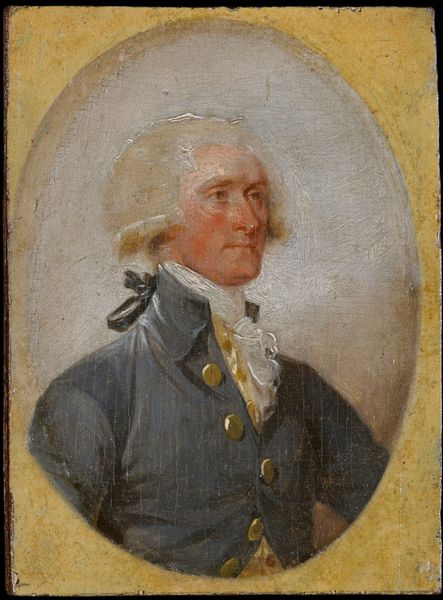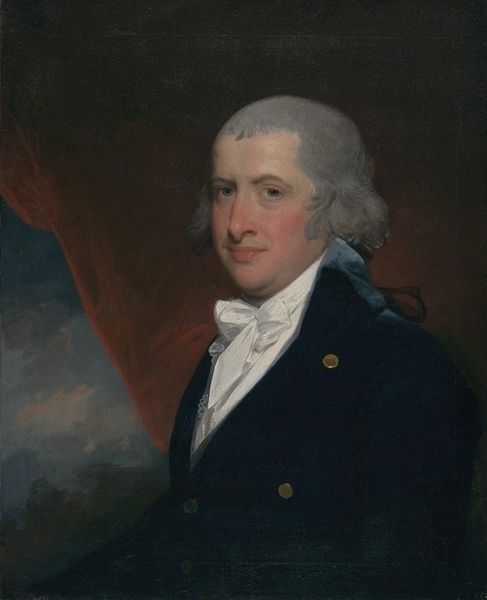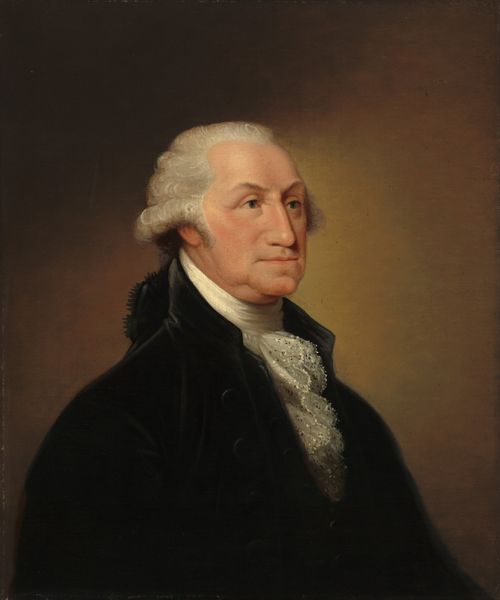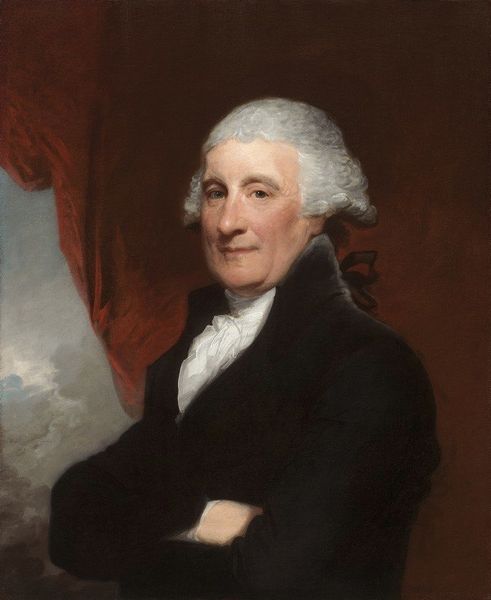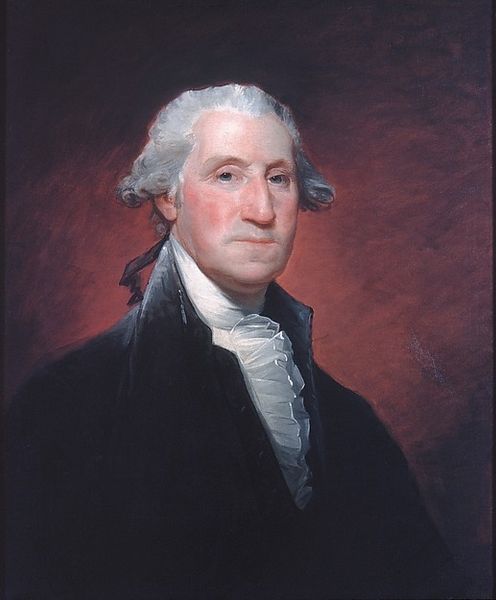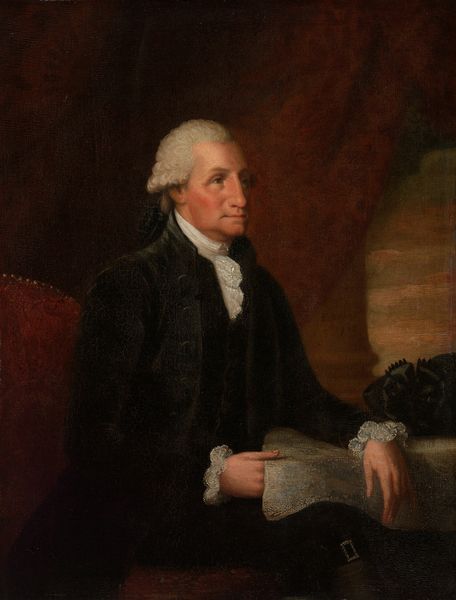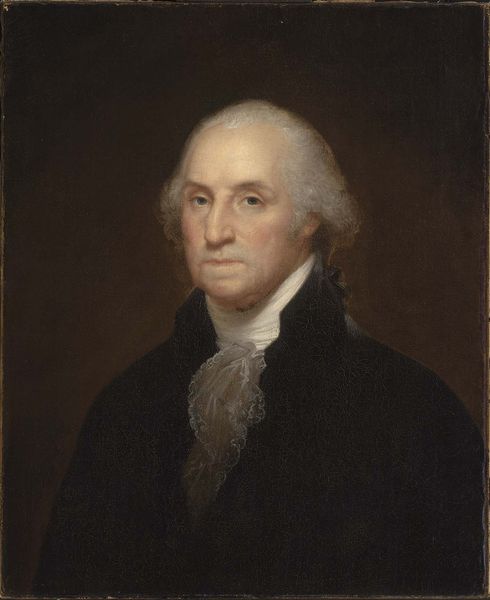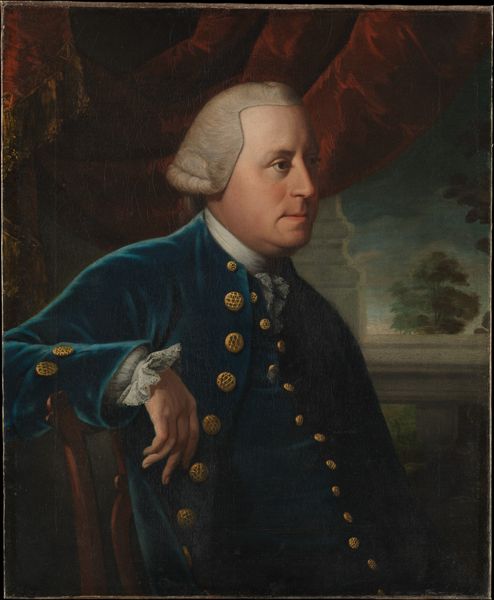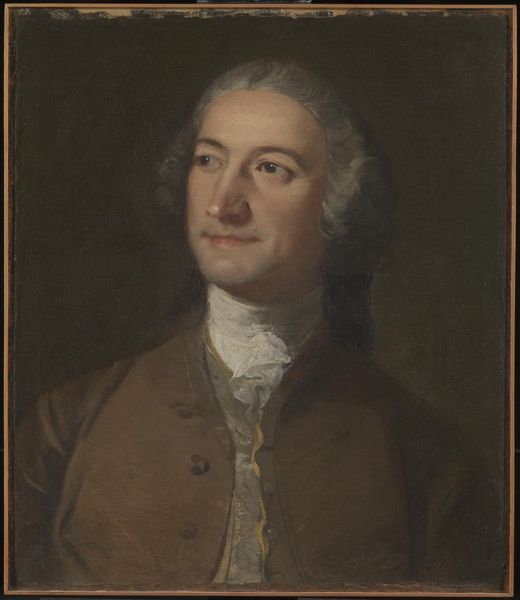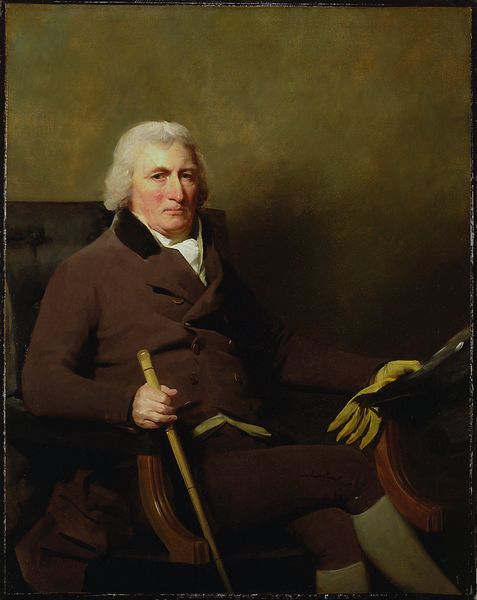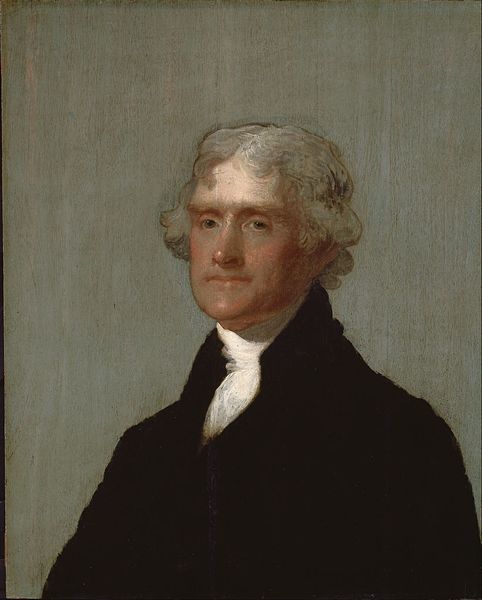
Dimensions: 30 x 24 3/4 in. (76.2 x 62.9 cm)
Copyright: Public Domain
Curator: Look at Romney's “Portrait of a Man," created between 1754 and 1802 using oil paint. The sitter appears self-assured and rather severe. What jumps out to you about this piece? Editor: It is quite stately. I'm curious about what made this particular individual worth portraying. Curator: Consider the material reality here. This isn't just an image; it's an object made with expensive pigments, stretched canvas, skilled labor. Who commissioned this, and why? It's not merely about commemorating the sitter's likeness, but broadcasting their status through the sheer expense of its production. Look closely at the impasto brushstrokes, notice the detail in the garment and the lace - these were painstakingly made by skilled artisans. What does the gold detailing on the clothing suggest to you? Editor: Perhaps that this gentleman wanted to showcase his prosperity? Almost like advertising his social standing. Curator: Exactly. We also have to look at the social context that dictated such representation of status and luxury goods and the power structures and forms of production of the time. Are there other aspects, linked to materiality and the way society and power were understood back then? Editor: The oil paint seems to give the portrait an incredible texture, emphasizing the richness of the fabric and, to an extent, making him look more real. Curator: Precisely. So, what have you gathered about the intersection between the subject and the art? Editor: I now understand that this painting tells a story about material consumption and societal status just as much as it documents the subject. Curator: Precisely! And it does so through the active labor, inherent materiality and the economics linked to artistic patronage during the late 1700's.
Comments
No comments
Be the first to comment and join the conversation on the ultimate creative platform.
